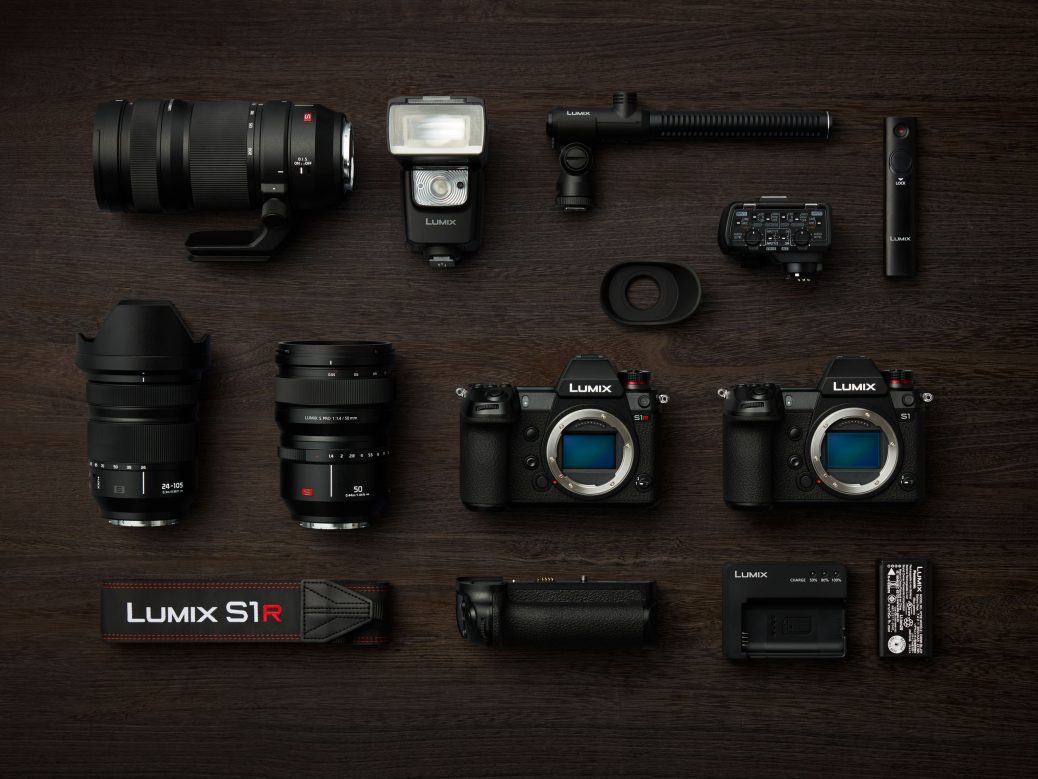Panasonic Launches its Lumix S1 and S1R Full-Frame Cameras
Panasonic first unveiled the S1 & S1R full-frame mirrorless cameras back in September 2018.
In somewhat of a tease, they held back a number of key specifications. The wait is finally over and we now have the full list of specifications, including pricing.
Panasonic seems to be adopting the same strategy as Sony and Nikon, so there are two new cameras with two different sensors.
The top of the range Lumix S1R has a 47-megapixel sensor, while the cheaper Lumix S has a 24-megapixel sensor.
The higher-resolution S1R is designed to appeal to professional stills photographers, while the S1 being more video-centric.
Aside from resolution and video features, the two cameras are very similar to one another.
Both use the L-Mount, a system owned by Leica with Panasonic and Sigma as licensees and members of the L-Mount Alliance.
Both cameras have headphone & microphone ports, a lockable HDMI port.
They are both weather-sealed and have a 5-axis in-body ‘Dual IS’ system.
Both cameras feature the highest-resolution electronic viewfinders on the market: 5.7M-dot OLED panels that run at 120Hz and a promised very little lag.
The S1 and S1R have 5-axis image stabilization built right into their bodies. Using this system alone, the cameras can reduce shake by up to 5.5 stops, but if you attach a stabilized lens, such as the new 24-105mm F4 Macro OIS, that number rises to 6 stops (in controlled testing – actual performance will vary). That’s because the two systems work in conjunction, with the lens’ stabilizers adding additional correction for yaw and pitch motion.
It’s a system first introduced in the GX8 and means that on-sensor IS can help provide correction for the large translational movements (handshake that shifts the camera up, down and side to side) that are prevalent when using wide-angle lenses. The greater potential travel of the in-lens IS unit can correct for the large pitch and yaw movements (handshake that rotates the camera’s field of view up, down and side to side) of longer focal lengths.
Panasonic Lumix S1 specs:
- 24MP full-frame CMOS sensor
- Depth from Defocus contrast-detect AF system
- 5-axis in-body ‘Dual IS’ system
- Fully weather-sealed
- 96MP ‘High Res’ mode
- 6 fps bursts with continuous AF
- 5.76M-dot EVF
- Dual-hinged 2.1M-dot touchscreen LCD
- UHD 4K/60p video capture (1.5x crop); Oversampled 4K/30p with no crop
- 10-bit HLG built-in, optional 4:2:2 V-Log
- One XQD and one SD card slot
- 380 shots/charge using LCD
- USB charging, including from laptop/tablet chargers and portable power banks
Panasonic Lumix S1R specs:
- 47MP full-frame CMOS sensor
- Depth from Defocus contrast-detect AF system
- 5-axis in-body ‘Dual IS’ system
- Fully weather-sealed
- 187MP ‘High Res’ mode
- 6 fps bursts with continuous AF
- 5.76M-dot EVF
- Dual-hinged 2.1M-dot touchscreen LCD
- UHD 4K/60p video capture with 1.09x crop and pixel binning
- One XQD and one SD card slot
- 360 shots/charge using LCD
- USB charging, including from laptop/tablet chargers and portable power banks
To cater for the new type of professional user its S1R and S1 are aimed at, Panasonic is launching a preferential Lumix Pro program along the same lines as those operated by Canon, Nikon and Sony.
This should give professional photographers confidence that they will get priority support when they need it.
Panasonic has re-affirmed its commitment to its smaller Micro Four Thirds format, seeing its two camera ranges as having two very different audiences.
This will be good news for those street photographers who’ve already invested in G series cameras and lenses, and indeed Olympus fans worried that Panasonic’s full frame announcement might spell the beginning of the end for the Micro Four Thirds format.
The cameras are available to order and are expected to arrive in April.
Pricing are:
S1R with 24-105mm lens at merely $4,599, S1R (Body Only) at $3,699.
S1 with 24-105mm lens at $3,399 and S1 (Body Only) at $2,499.




